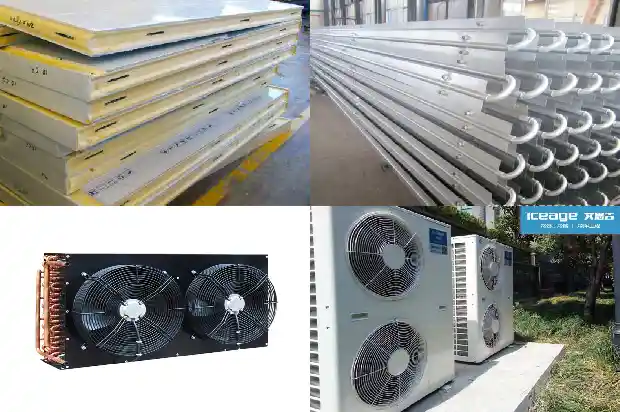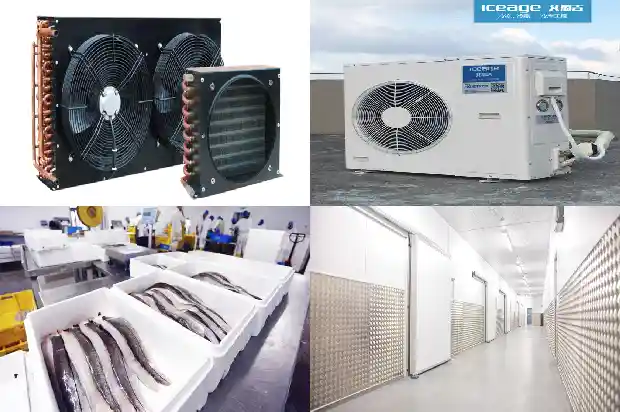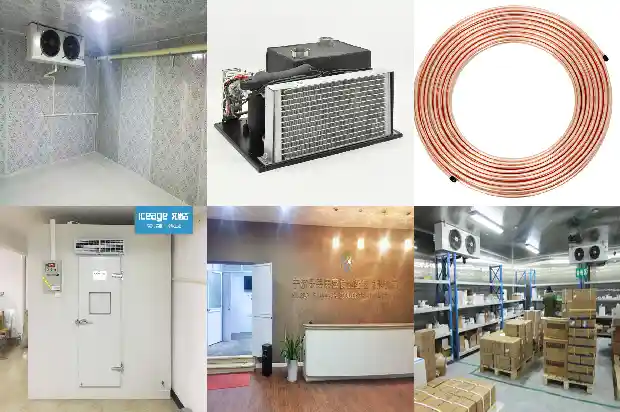Training on Precision Air Conditioners: Here's the Valuable Article You Need~~
2025-03-14
- Basic Refrigeration Parameters:
Temperature: It represents the degree of hotness or coldness of a substance.
Celsius temperature (℃): Under a pressure of 1 atmosphere, the freezing point of water is set as 0℃, the boiling point is set as 100℃, and the range in between is divided into 100 equal parts, with each part being 1℃.
Humidity: It refers to the amount of water vapor contained in the air.
Absolute humidity: The content of water vapor in unit weight of air at a certain temperature.
Relative humidity: The ratio of the partial pressure of water vapor in moist air to the partial pressure of saturated water vapor at the same temperature at a certain temperature.
Enthalpy value of air: The total heat contained in the air. - Refrigeration Performance Indicators:
Refrigeration capacity: The heat absorbed from the low-temperature heat source, represented by Q (Kw);
Sensible cooling capacity: The cooling capacity consumed for temperature change;
Latent cooling capacity: The cooling capacity consumed for phase change without causing temperature change (water condensation);
Total cooling capacity: The sum of sensible heat and latent cooling capacity;
Sensible heat ratio (SHR): The ratio of sensible cooling capacity to total cooling capacity;
Coefficient of performance (COP): The ratio of refrigeration capacity to the power consumed by the compressor;
Energy efficiency ratio (EER): The ratio of the obtained cooling (heating) capacity to the energy consumed. It includes the power consumption of the system fan;
Air volume of the air conditioner: The total amount of air output by the air conditioning unit per unit time (commonly denoted in m3/hr). - Cooling Capacity Units:
Kilowatt (kw): The International System of Units, currently the most commonly used unit for cooling capacity.
Kilocalorie (kcal/hr): A commonly used unit.
The conversion relationship with kw is: 1kw = 860 kcal/hr;
Refrigeration ton (RT) — American refrigeration ton; 1 refrigeration ton = 3.5kw;
Horsepower (HP) — Also known as horsepower, it represents the input power and is often used to represent the refrigeration capacity. When representing the refrigeration capacity, its actual meaning is the refrigeration capacity generated by consuming 1hp of power: 1HP≈2.5kw;
BTU — British unit of refrigeration capacity; 1kw = 3414BTU. - Refrigeration Cycle
In the refrigeration cycle system, the compressor sucks in the low-temperature and low-pressure refrigerant vapor from the evaporator, adiabatically compresses it into high-temperature and high-pressure superheated vapor, and then presses it into the condenser for constant-pressure cooling, releasing heat to the cooling medium. Then it is cooled into a subcooled liquid refrigerant. The liquid refrigerant is adiabatically throttled by the expansion valve into a low-pressure liquid refrigerant, which evaporates in the evaporator and absorbs the heat in the air, thus cooling the air and reducing the air temperature to achieve the purpose of refrigeration. The low-pressure gaseous refrigerant flowing out is sucked into the compressor, and the cycle repeats.
- Why Use a Computer Room Air Conditioner?
Because the computer room air conditioning equipment has a large heat dissipation amount and concentrated heat density, and the equipment operates without stopping throughout the year:
If the temperature in the computer room cannot be kept constant, the lifespan of electronic components will be greatly reduced;
If the local temperature is too high, the equipment is likely to be burned out and shut down;
If the humidity in the computer room is too high, condensed water will be generated;
If the humidity in the computer room is too low, destructive static electricity will be generated;
If the cleanliness is not sufficient, data exchange errors and overheating of equipment components will occur;
If the air volume is not large enough, the heat dissipated by the equipment cannot be removed quickly. - Summary of the Differences between Computer Room Air Conditioners and Comfort-type Air Conditioners: Computer room air conditioners can ensure a constant temperature, constant humidity, constant cleanliness, and a long design lifespan in the computer room.
- Structure of Computer Room Air Conditioners
Structure:
Refrigeration system:
Heating system:
Function of the humidifier: When the relative humidity in the computer room is lower than the set value, the humidification system is activated. The external water is processed by the humidification system and then converted into water vapor, which enters the computer room to increase the relative humidity of the computer room.
Control system: - Classification of Cooling Methods of Computer Room Air Conditioners
- Direct Expansion Air-cooled Type
Advantages: Convenient for installation and construction, and the equipment has strong operational independence.
Disadvantages: Affected by the installation distance between the indoor and outdoor units and the elevation difference between the upper and lower positions. - Direct Expansion Water-cooled Type
Advantages: With the configuration of the pump, it is not limited by the distance of the heat exchange equipment.
Disadvantages: Heat transfer is through a secondary heat exchange system, making the system complex. The construction of the water system project is complicated, and the operation of the machine is affected by the heat exchanger and the cooling tower. - Chilled Water-cooled Type
Advantages: Simple machine structure, low machine cost, and low operating cost (without a compressor).
Disadvantages: The system must be equipped with a chiller unit. A failure of the chiller unit will lead to the paralysis of the entire system; if the chiller unit is backed up, the total cost will be high. - Air-cooled Dual Cooling Source Air Conditioner
Advantages: The machine has two sets of refrigeration systems with different methods, and the operation reliability is high.
Disadvantages: Complex machine structure, high machine cost, and complicated installation and construction.
VII. Classification of Air Supply Methods of Computer Room Air Conditioners
Under-floor air supply: Applied when the net height of the floor is > 300mm; the one-side air supply distance < 20 meters; it is preferentially selected when the heat density of the computer room is greater than 500W/m2.
Duct overhead air supply: Applied when the air supply distance is relatively long and there is no under-floor air supply.
Hood overhead air supply: Applied to small and medium-sized computer rooms with an air supply distance generally < 15 meters.
Selection of the air supply method of the air conditioner in the computer room:
If an elevated floor is installed in the computer room and the height of the elevated floor ≥ 300, consider selecting an under-floor air supply air conditioner.
If an elevated floor is not installed in the computer room, or the height of the elevated floor is not sufficient to ensure smooth air supply, consider selecting an overhead air supply air conditioner. When using an overhead air supply air conditioner, an air supply hood needs to be installed to ensure the air supply direction of the air conditioner.
If the computer room has the conditions, the overhead air supply air conditioner combined with the air supply duct will have a better operating effect than the hood air supply.
Related Articles
- Daily Maintenance Training for Users after Installation of Small and Medium-Sized Cold Storages
- Air-cooled, Water-cooled, Chilled Water, Dual Cooling Source and Free Cooling Precision Air Conditioners
- Installation and Welding of Precision Air Conditioning Systems
- The horsepower of an air conditioner originally refers to the input power, including that of the compressor
- The Indoor Humidity Is Too High in Summer. How to Dehumidify? Can the Dehumidification Mode of the Air Conditioner Really Save Electricity and Money?
- Frosting in the Cold Storage? A Detailed Explanation of the 9 Reasons for Frosting of Air Coolers and 4 Defrosting Methods~~
- Why Does the Air Cooler Frost? What Are the Defrosting Methods?
- Noise Reduction and Vibration Damping in Refrigeration and Air Conditioning Systems
- Performance Comparison of Air-Cooled Heat Pumps, Multi-Split Systems and Water-Cooled Units
- Performance Comparison of Multi - connected Units, Air - cooled Modules and Water - cooled Screw Units
- The Influence of Temperature Changes on the Air Conditioning Refrigeration System
- Analysis of the Main Functions and Components of Refrigeration Air Conditioners
- Comparison Issues between Air-Cooled Screw Units and Air-Cooled Modular Units
- Analysis of the Working Process and Principle of Hot Fluoride Defrosting for Air Coolers
- Advantages and Disadvantages of Air-cooled Multi-connected Units and Analysis of Their Components
- Do You Have a Thorough Grasp of All 34 Components and Functions of the Air-Cooled Multi-Split System?
- Which is Better, Air Cooler or Aluminum Pipe Row? How to Choose?
- What Causes the Indoor Unit of an Air - conditioner to Freeze? Here's the Answer~
